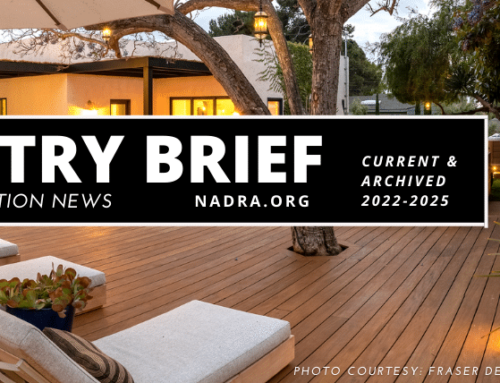It’s not often you’re a witness to a real revolution in an industry. But PWT Treated® LVL marks such a change. But before we explore how PWT Treated® LVL is creating that revolution in the deck building industry, let’s briefly review the history of wood preservation. Because PWT Treated® LVL was developed not just as an alternative to treated lumber, but as a critical transformation in the way deck builders work moving forward.
A brief history of wood preservation.
Ever since humans starting building with wood, they’ve fought the same enemy: damage from moisture, rot and wood-destroying insects. Whether building shelters for people or livestock or building a fence – let alone a modern-day deck – we’ve searched for solutions. We’ve tried everything, with varying degrees of success.
Lumber from certain tree species – like osage-orange and black locust – was used for fence posts by farmers well into the 20th century because their dense wood resisted moisture damage. You can still find such fenceposts on rural farms in the Appalachian region of the U.S. today. Redwood and cedar are also somewhat more resistant to decay and insects, but they are not practical lumber choices for most builders today because of limited availability and high costs.
The messy preservative: creosote.
Creosote-preserved wood has been used for more than 200 years. Creosote – a coal-tar preservative liquid – could be painted on fence posts or any lumber that came into contact with the ground to resist moisture and decay.
But creosote is smelly, messy and not very builder (or homeowner) friendly. The EPA eventually banned creosote fence posts because it is linked to cancer and other environmental risks. It’s still used today for railroad ties, utility poles and some commercial and marine applications. Creosote was fairly good at its job. But newer and better solutions came along.
The pros and cons of pressure treated lumber.
Pressure treated lumber was introduced in the 1940s but early preservative formulas included arsenic. In the 1980s, newer and safer formulas were developed and PT lumber because the industry go-to answer.
One problem still persists even today. Depending on the wood species and process involved, the preservatives sometimes penetrate only ¼ inch — or less – into the board’s surfaces, so the core of any lumber is never fully protected. When a carpenter cuts a treated piece of lumber, the exposed cut gives moisture, insects and decay easy access into the wood to weaken and destroy its structural properties.
So, treated lumber warranties – if they exist at all – vary greatly, which can be confusing for contractors and homeowners alike.
Treated lumber has another critical problem. It’s still solid wood, which makes it highly susceptible to warping after it leaves the mill and is stored at a distributor’s or dealer’s location.
Every deck builder knows the frustration of culling through treated lumber for joists and beams that aren’t twisted, bowed or cupped. Even then, workers often have to hand-plane joists that have crowns in order to create a flat, level decking surface.
Enter the revolutionary PWT Treated® LVL.
What’s significant about PWT Treated® LVL is that it gives deck builders all the advantages of LVL – extreme strength, durability and dimension consistency – plus outstanding protection against moisture, rot decay and wood-destroying insects.
Why did it take so long for someone to create an exterior grade LVL? The short answer is that it’s hard to do. Many companies have tried and they all failed. After years of experimentation and R&D, PWT succeeded. And their success is good news for deck builders everywhere. PWT Treated® LVL features the Tru-Core® preservative treatment to prevent damage from rot, decay and destructive insects. This treatment penetrates throughout every piece of LVL because it’s applied between the veneers during the manufacturing process. As the veneers come together to form each billet of the product in the plant, the preservative treatment is applied between layers. So, the protection runs throughout every piece of LVL. Cutting the product doesn’t create weak spots for decay and moisture to gain access.
That difference alone sets PWT Treated® LVL head and shoulders above traditional treated lumber. But the real game-changer is that PWT now makes all the advantages and benefits of LVL available in exterior construction applications – like decks.
The many advantages of PWT Treated® LVL.
Let’s look at all of the benefits of PWT Treated® LVL. They really add up fast: Because it’s composed of layers of veneer bonded together under heat and pressure, PWT Treated® LVL resists warping, movement and shrinking. The result: no bowing, twisting, cupping or crowning. As explained above, the Tru-Core® treatment permeates between the veneer layers during the manufacturing process , resulting in a 25-year warranty against damage from decay, fungal rot and wood-destroying insects.
PWT Treated® LVL is manufactured in large billets that can be cut down into a range of widths and lengths. That means deck builders have a wider selection of sizes and can use longer deck beams and joists to support decking. The result? Uninterrupted sight lines with fewer column supports. And, with longer spans, they can build a bigger deck with the same number of columns and beams.
Because it’s LVL, PWT Treated® LVL provides greater strength and load capacities, which are critical to the performance and safety of the entire deck system. PWT Treated® LVL is a total sub-structure solution because it can be used for deck joists, beams, ledgers, stair stringers and bridging.
PWT Treated® LVL is the perfect match for composite decking surfaces such as Trex®, TimberTech®, AZEK®, Fiberon® and others – with a comparable warranty. Unlike traditional treated lumber, PWT Treated LVL can be painted or stained immediately at the time of installation. There’s no need to wait to finish the job.
The solution that deck builders – and their clients – have been waiting for.
Today, deck builders demand more because their clients demand more. Homeowners have learned from composite decking surfaces to expect long-lasting performance and minimal maintenance.
They also expect more innovation and greater flexibility in the overall design and construction from architects and builders.
PWT Treated® LVL allows the deck builder to answer all those demands. It also gives the deck builder major advantages over his competitors. And that’s why the arrival of PWT Treated® LVL signals a true revolution in the deck building industry.
The one question every deck builder should ask.
If you’re not positive that PWT Treated® LVL is the obvious choice for deck builders, ask yourself this question: why would you build composite decking with a 25-year (or longer) warranty on top of an old-fashioned treated lumber substructure that will only last a few years?
The answer: you simply wouldn’t.
For more information about this revolutionary product, visit https://pwtewp.com/products/pwt-treated/.




